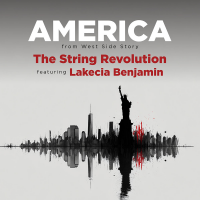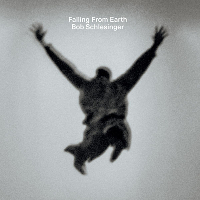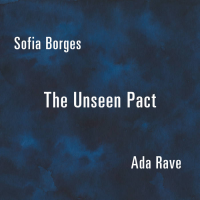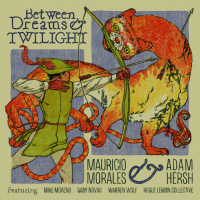Home » Jazz Articles » Extended Analysis » Gene Pritsker's Sound Liberation: Gene Pritsker's Sound ...
Gene Pritsker's Sound Liberation: Gene Pritsker's Sound Liberation: Varieties of Religious Experience Suite
 Gene Pritsker's Sound Liberation
Gene Pritsker's Sound LiberationVarieties of Religious Experience Suite
Innova Records
2010
There are times when certain music—usually symphonic in scope—suggests the character of a new cultural epoch. Beethoven's 3rd Symphony, also known as the Eroica symphony, was one such, and it set the tone for the Romantic era. His 9th Symphony was even more significant as it not only celebrated the Age of Enlightenment, but also humanity's action against repression. The composition of the 9th was so revolutionary, as was its first performance in 1824, and because Beethoven did not pander to the musical taste of a patron, or the expectation of an audience, his magnum opus came to represent an act of artistic independence. This was something so inspirational even Wagner picked it up, as did other artists.
Through several periods in musical history, other composers made indelible marks of their own. Igor Stravinsky, Alban Berg, Anton VonWebern and Arnold Schoenberg; Karl-Heinz Stockhausen, Duke Ellington, Charles Mingus, Thelonious Monk, Herbie Nichols, Charlie Parker and Anthony Braxton are some of these important composers. Their art was influenced by and fused the myriad elements of mysticism and spirituality, psychology and philosophy, poetry and mathematics. The resultant music was always daring, full of magic and mystery and, therefore, full of wonder and surprise.
Barring the obvious exceptions, much of 21st century composition appears to be thinning in significance, but this might be about to change. Gene Pritsker is one of a very spare handful of composers effecting this change, and evidence of this is found in the Varieties of Religious Experiences Suite, a towering instrumental extraction from his opera of the same name. "The VRE Suite," as it is also referred to, presents a microcosmic version of the schematics of William James and his philosophy of pragmatism. But that is not only in thought, but as Beethoven's 9th Symphony also embodied the spirit of Schiller's "Ode to Joy" in thought and word and deed as well, so also does the "VRE Suite" follow, rapturously, the thought and word of James' own Varieties of Religious Experiences, a stream of consciousness psychology that incorporated the empiricism of plurality, which in turn impacted hugely on the avant-garde.
How this has a bearing on the "VRE Suite," in particular, and on Pritsker's music in general, is in the intellectual level of his compositions and his own philosophy, that marks a radical departure from the singularity of a sound source, to one that is so plural that it blurs any notion of genre and even creates an unique idiom. Theoretically that would seem rooted in classical polyphony, with an irregular, yet concrete geometry of the utilization of sound and silence in spaces that almost correspond to the human breath. Counterpoint is woven into the music's fabric in a dancing, twisting kind of double-helix form, entwined with dissonance and soaring consonance. The guitars of Pritsker and Greg Baker playfully intertwine with the majestic cello of David Gotay and Mat Fieldes' bass, which is played with great virtuosity—whether pizzicato or con arco. Joe Abba rattling percussion and thunderous splashes of cymbals echo around the moaning harmonics of the guitarists as they create incessant acoustic feedback, especially on the 12:42 minutes long "Tolstoy."
The composition itself unites the theory that William James espoused and the various parts of the suite trace his thinking. James' pragmatism was embedded in his belief that all human response is related to religious genius, or "experience," and this is, in turn, best felt in the microscope of the mind. Pritsker appears to posit that this is true of music as well. His suite is a case in point. Set against a backdrop of James' "pluralism," Pritsker's music knows no generic boundaries either. The rhythmic idiom of hip-hop melds into the swinging syncopations of jazzy surprise, and this cleverly plays out in "The William James Introduction" and "Consciousness of a Presence." While "The Less Real of the Two" is a brooding sequence, "Closer to Me Than My Own Breath" has a swooning kind of swagger as guitars and cello are engaged in an interminable dance. "William James' Genuine Perceptions of Truth" is elegiac, and its freely engaging polyrhythm embodies the very pluralism that James espoused in its absence of conventional sense of timekeeping. Abba's percussion colorations are sublime here.
Of the three hundred or so compositions by Pritsker, Varieties of Religious Experience Suite may be his most groundbreaking yet. The penultimate, "Tolstoy" sequence captures Pritsker's own sense of the empiricism of the plurality of music (although this echoes throughout the suite), where musical idioms—whether melodic, harmonic or rhythmic—mix into a melange as heady as peyote. Only this time, the memory of the music lingers long after the last note strikes the inner ear. Now all that is left is the wish for a recording of the Varieties of Religious Experience to be presented on record complete with the operatic arias included.
Tracks: William James' Introduction; Consciousness of a Presence; Everything Else Might be a Dream; The Less Real of the Two; Closer to Me Than My Own Breath; William James' Genuine Perceptions of Truth; Tolstoy; William James' Conclusion.
Personnel: Gene Pritsker: guitar; Greg Baker: guitar; David Gotay: cello; Mat Fieldes: bass; Joe Abba: drums.
Personnel
Composers
band / ensemble / orchestraAlbum information
Title: Gene Pritsker's Sound Liberation: Varieties of Religious Experience Suite | Year Released: 2010
Tags
About Composers
Instrument: Band / ensemble / orchestra
PREVIOUS / NEXT
Support All About Jazz
 All About Jazz has been a pillar of jazz since 1995, championing it as an art form and, more importantly, supporting the musicians who make it. Our enduring commitment has made "AAJ" one of the most culturally important websites of its kind, read by hundreds of thousands of fans, musicians and industry figures every month.
All About Jazz has been a pillar of jazz since 1995, championing it as an art form and, more importantly, supporting the musicians who make it. Our enduring commitment has made "AAJ" one of the most culturally important websites of its kind, read by hundreds of thousands of fans, musicians and industry figures every month.
























